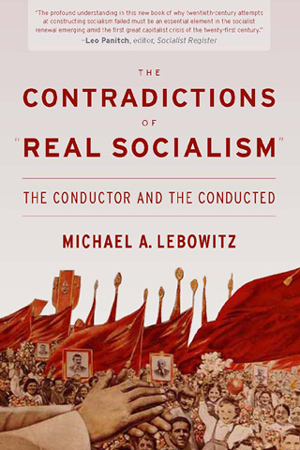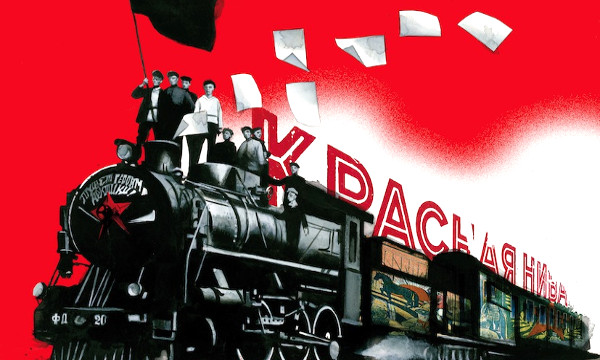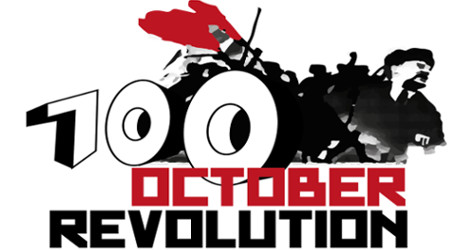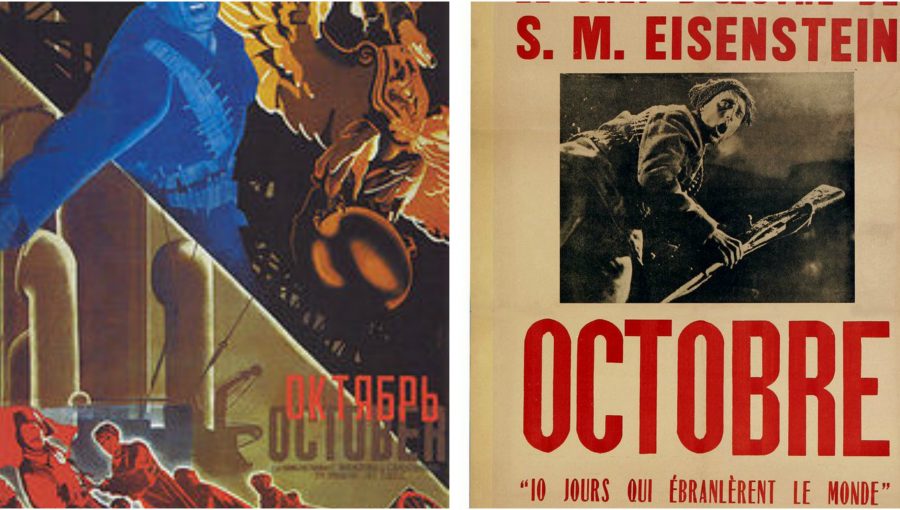Review of The Contradictions of “Real Socialism”: The Conductor and the Conducted, by Michael A. Lebowitz, New York: Monthly Review (2012).
Excerpt from Lebowitz’s book, see Bullet No. 665: “Overture: The Conductor and the Conducted.”
In current discussions of twenty-first century socialism, the work of Michael Lebowitz has a unique merit: it is rooted in the experience of Cuba and Venezuela, where efforts in recent decades to move toward socialism have been the most vigorous. Quotations from Che Guevara and Hugo Chávez set the tone.
 Lebowitz’s vision of the path to a socialist future is developed in several recent volumes (see “Selective Bibliography,” below). His Contradictions of “Real Socialism”, by contrast, analyzes the failure of the most concerted attempt to launch a transition to socialism, which took place in the Soviet Union and, after 1945, in allied states in Eastern Europe. As late as the early 1960s, the Soviet Union was widely hailed for setting the pace in economic growth among industrialized countries. But already its dynamism was flagging. Its downhill course from sputnik (the world’s first artificial satellite, 1957) to zastoy (stagnation) and collapse took only 34 years.
Lebowitz’s vision of the path to a socialist future is developed in several recent volumes (see “Selective Bibliography,” below). His Contradictions of “Real Socialism”, by contrast, analyzes the failure of the most concerted attempt to launch a transition to socialism, which took place in the Soviet Union and, after 1945, in allied states in Eastern Europe. As late as the early 1960s, the Soviet Union was widely hailed for setting the pace in economic growth among industrialized countries. But already its dynamism was flagging. Its downhill course from sputnik (the world’s first artificial satellite, 1957) to zastoy (stagnation) and collapse took only 34 years.
Lebowitz maintains that this failure was caused not by adverse objective conditions but by productive relations justified by a wrong theory – “a distortion that forgot about human beings.” Paraphrasing Che Guevara, he insists that “to build socialism it is essential, along with building new material foundations, to build new human beings.” This cannot be done from above, by a state, Lebowitz says. “Only through their own activities through autonomous organizations – at the neighbourhood, community and national levels – can people transform both circumstances and themselves,” he adds, quoting from an essay he wrote as the USSR staggered toward collapse in 1990.
Triangle of Socialism
This principle remains true in the new century. “The absence of a vision of a socialist alternative ensures that there is no alternative to capitalism. If you don’t know where you want to go, no road will take you there,” Lebowitz says. He charts this path by drawing on Hugo Chávez’s conception of the “triangle of socialism,” whose three elements are:
- Social ownership of the means of production, in which people, as producers and as members of society, determine the use of their social labour.
- Social production democratically organized by workers through cooperation and solidarity.
- Satisfaction of communal needs and communal purposes – our needs as members of the human family.
The mature Soviet model failed to achieve any of these three goals.
Lebowitz limits his inquiry to the social structures in the USSR and the Eastern European states that took the Soviet Union as a model from 1950 to 1990. (The latter states are presumably Poland, East Germany, Czechoslovakia, Romania, Hungary, and Bulgaria. Lebowitz discusses the Yugoslav experience in Build It Now.) He calls these structures “real socialism,” picking up on a term coined in 1973 and used by defenders of these structures. The words functioned as a euphemism, acknowledging that these societies, which claimed to be socialist, did in fact deviate from the socialism envisaged by Marx and Engels. Critics of these structures use other words, such as “Stalinism,” “state capitalism,” or “bureaucratized workers’ states,” and the differences are significant. In this article, however, I will use Lebowitz’s term.
Musical Metaphor
The guiding principle of “real socialism,” Lebowitz says, is economic command from on high. The relationship of leaders to society is analogous, he says, to that of an orchestral conductor to members of the ensemble: “a social relation in which the roles of conductor and conducted are fixed, and commands flow one way….”
The metaphor is questionable. In a well-led musical ensemble, the “conducted” do help shape the performance, influencing each other as well as the conductor. Moreover, the musical dedication of a great conductor has little in common with the brutal behaviour of a Joseph Stalin.
No matter. Lebowitz’s comparison sets up a limiting case. Even if Soviet leaders had been as dedicated as a von Karajan, he seems to be saying, this model of socialist leadership will necessarily fail.
The Shortage Economy
Many other analysts have demonstrated that the Soviet Union failed in fact to set up an effective system of economic planning. Lebowitz is original in locating the source of inefficiency in a contradictory triangular relationship of three social layers: central planners, managers of productive enterprises, and workers. Their conflicting interests, he says, produces the distinguishing economic characteristic of “real socialism”: pervasive shortages and the consequent hoarding by enterprises of productive inputs.
Under “real socialism,” all but the smallest enterprises were state-owned and typically received direction from state ministries regarding production, raw materials procurement, and product delivery from state ministries. Enterprise managers were, in theory, driven to optimize output by bonuses for achieving production norms.
Lebowitz’s analysis is sustained by the observations of Che Guevara in the early 1960s, who noted that money incentives generate the social irresponsibility characteristic of capitalism. Managers send incorrect information to their ministries, designed to understate their enterprises’ potential and to overstate its needs, in order to keep production quotas well below what was possible. Planning can be no better than the information on which it is based, and in this case, “false information flowed upward,” Lebowitz says. He quotes British economist Alec Nove: “To expect unbiased information from those interested in the results to which the information is put is to live in cloud-cuckoo land.”
But tricking the planners was only one of many illegal techniques used to meet quotas. Among others: “stockpile inputs and hoard materials… do favours, bribe officials, make alliances… stockpile and hoard workers.” The Czechoslovakian economist and reformer Ota Šik referred to this in 1968 as “a mechanism for deception on a grand scale… the only sphere in which people’s initiative could really develop to the full.”
Lebowitz views the disharmony of planners and managers as an example of a “principal-agent problem.” This term is used by mainstream political scientists to describe situations where those carrying out policies (e.g. factory management) have different interests from those making the decisions (e.g. head office).
In capitalist firms, this disharmony is kept within bounds by the discipline of market-based accounting and the threat of layoffs and bankruptcy. But attempts to introduce such mechanisms in “real socialism” (often called “market socialism”) ran up against constraints flowing from the relations of both planners and managers with the working class.
A Social Contract with Workers
In the countries of “real socialism,” the capitalist ruling class had been dispossessed and the traditional mechanisms of social control dismantled. The new regime’s fragile stability rested on its claim to rule on behalf of working people. Workers surrendered some political rights they had fought for under capitalism, such as freedom of speech and association and representative democracy, but they received other hitherto unobtainable rights in return.
This outcome represented a “social contract,” Lebowitz says, quoting Russian socialist Boris Kagarlitsky’s description of it as “a system of mutual obligations.” The regime undertook to ensure a rising level of consumption, stable prices, and above all full employment, while granting workers “substantial individual control over the organization and execution of work.” Labour itself remained alienated; workers felt no impulse to maximize productivity or quality; the productive system was marked by “rigidity and inertia.”
“The population was forced into the social contract,” Kagarlitsky says. It was “definitely not free.” But “it was accepted … because people liked certain aspects of the contract.” In many ways it provided workers with a better deal than that available under capitalism.
Elements of this social system, like the abolition of capitalist ownership, were necessary and progressive as potential building blocks for socialism, Lebowitz believes. He acknowledges the need for social leadership and for an authoritative state administration. The decisive weakness, he says, lay elsewhere.
Vanguard Relations of Production
In Lebowitz’s view, the resulting social system, which stands apart from both capitalism and socialism, is distinguished above all by “vanguard relations” between the rulers, organized in a political party, and society as a whole. The party is committed to the goal of system change, of building a communist society. It sees itself as the instrument to achieve this goal and believes that this process requires discipline, centralism, and unity, and deprives the population of levers of democratic control.
The party puts its imprint on the state, Lebowitz contends. The economy must be nationalized and placed under hierarchical control. Production must be expanded to ensure that the social contract is met. To make this possible, extraction of the economic surplus must be maximized. And to achieve these ends, the party must control everything and extend its influence everywhere.
The goal is for the vanguard to know everything, as Leon Trotsky remarked in 1932, is to become a “universal mind,” able to “register simultaneously all the processes of nature and society.” Lebowitz calls this a “computopia.” But independently of computers and the level of technology, this vision is obstructed by the conflicting goals of counterposed social layers. The outcome, as Guevara noted in the mid-1960s, is an economy strongly resistant to technological improvement.
An Alienated Society
Regardless of how the economic surplus is invested, Lebowitz contends, this system is based on exploitation, because workers have no control over how the surplus is utilized. Even if workers benefit from this surplus, the vanguard system is based on the “inherent deformation of people.” Lebowitz sums up the results:
“That is a society with a profound difference between thinking and doing, one where workers do not develop their potential because they do not engage in protagonistic activity. It is an alienated society in which workers do not view work as fulfilling, are alienated from the means of production, wish to consume and consume, and look upon work as a disutility – a burden that must be reduced. It is a society that cannot produce socialist human beings.” (p. 83)
No wonder that these alienated societies evolved toward economic stagnation, and the rights assured to workers under the “real socialism” social contract were increasingly undermined.
Lebowitz maintains that the cause of this economic failure is to be found in the realm of governance – the manner in which political and social power was exercised. He proposes an alternative: “a community of associated conductors” in which workers share in guiding society and economy. But how will these workers organize the economy – that is, the web of decisions that govern distribution of raw materials, production inputs, labour power, investment, goods, and services? What role in distribution will be played by markets – capitalist or otherwise? Lebowitz does not take up this question, on which there is a massive literature.
Managers vs. Planners
Lebowitz portrays the internal contradictions of “real socialism” above all in terms of the struggle of managers against planners. Managers strive to maximize enterprise income and personal bonuses, including by sabotaging the planning system. Under “real socialism,” they are not capitalists, Lebowitz says, but they “contain within them the logic of capital.”
Making his only reference to a Marxist opponent of Stalin, Lebowitz quotes a Russian Left Oppositionist of the 1920s, Yevgeny Preobrazhensky:
“The state economy in the USSR was in ‘an uninterrupted economic war with the tendencies … of capitalist restoration.’ This was a ‘struggle between two mutually hostile systems,’ a war between two regulating principles … ‘the law of value’ and ‘the law of primitive socialist accumulation’.”
But these regulating principles did not confront each other openly. “Rather, Preobrazhensky insisted, they interpenetrated – coexisting, limiting, and significantly deforming each other.” Under “real socialism,” Lebowitz suggests, the interaction of the two logics produced not the best but the worst of both worlds.
However, in contrast to the dynamic Soviet experience in the 1920s, “real socialism” evolved toward stagnation, making the social contract with workers increasingly untenable. Managers strove to be freed from the constraints of both workers and planners, Lebowitz says. The conflict invaded the ruling party, and pro-capitalist managers got the upper hand. The outcome, as we know, was the collapse of “real socialism” in 1989-91, as the plan was abandoned, while state property was gifted to managers and their cronies – the embryo of a new capitalist ruling class.
Historical Origins
But why did this surrender to capitalism take place with so little resistance, particularly from the layer of planners identified by Lebowitz as, at least initially, dedicated partisans of socialism?
At the very moment of the USSR’s collapse, the Communist leadership in Cuba made common cause with Cuban workers to defend their revolution, even though living standards were driven sharply downward. Yet in the USSR, not so much as a significant faction of the ruling party defended the Soviet order. How is this discrepancy to be explained?
Here, surely, it is necessary to analyze how “real socialism” originated and how this history shaped its ruling layers. Lebowitz acknowledges this need and promises to write on this question separately. His Real Socialism avoids engaging with the Stalin-era debate on worker protagonism. Trotsky, for example, is not mentioned. Lebowitz may have taken this approach in order to avoid being engulfed in polemics of long ago, debates where most minds are closed. But his omission detracts from his argument.
Worker Insurgency
Workers in the countries of “real socialism” did rise in revolt on several occasions, and on some occasions formed alliances with oppositional currents in the ruling elite (Hungary 1956, Czechoslovakia 1968). Insurgent workers were a force that could renew and reinvigorate the movement to socialism. Yet this potential did not inspire any wing of the ruling elite in these countries. This fact demands explanation.
Lebowitz focuses on the conflict between socialist-oriented “planners” and self-interested “managers.” But this entire ruling layer had interests counterposed to those of workers: substantial material privileges, a monopoly of decision-making, and an apparatus of secret-police repression. These abuses of power all violated the stated principles of “real socialism” and aroused contempt among the general population.
Moreover, although contradictions of “vanguard relations” were visible in the Soviet republic’s first years, the outlook of the ruling layer was consolidated in a struggle in the USSR in which socialist opposition forces were not merely driven from office but jailed and then in the 1930s physically exterminated, along with hundreds of thousands of loyal Soviet citizens. It was this reactionary fury, in conditions of defeat for revolution outside Soviet territory, that forged the ruling layer of “real socialism.” This “vanguard,” elevated above society and fearful of losing its privileges, embraced the advent of capitalism with near unanimity; even the military command, which stood to lose, did not object – an outcome that reflected the depths of alienation among the population as a whole.
Lebowitz asks – but does not answer – an urgent question. When authority is delegated downwards to communities and self-managed enterprises, as he holds to be necessary, “who speaks for the working class as a whole?” Who has responsibility to address inequality and oppression? Surely the answer lies in workers’ forming political associations – parties, if you will – that can contend for influence in representative assemblies.
Lebowitz identifies many “germs of socialism” found in the societies of “real socialism”: workers’ egalitarianism, their spontaneous cooperation, their sense of their power, their tendency to press for workers’ management – even their informal exchanges of favours that Lebowitz terms a form of “gift economy.”
Such elements, plus the abolition of capitalist rule and ownership, created a foundation for something better than “real socialism.” All these enumerated elements, plus a strong commitment to worker protagonism, were present in the October 1917 revolution that
established Soviet power. The movements for socialism in Cuba and Venezuela, from which Lebowitz draws inspiration, took shape not as a clone of the USSR but as Mariátegui’s “heroic creation.” And this tradition, unlike that of “real socialism,” never broke its link with the historical inspiration of the 1917 revolution.
Encompassing the historical context omitted from Lebowitz’s book thus powerfully sustains its main thesis: “real socialism” was and is not an inevitable destination; there is another, better path that can in fact advance toward socialism. •





